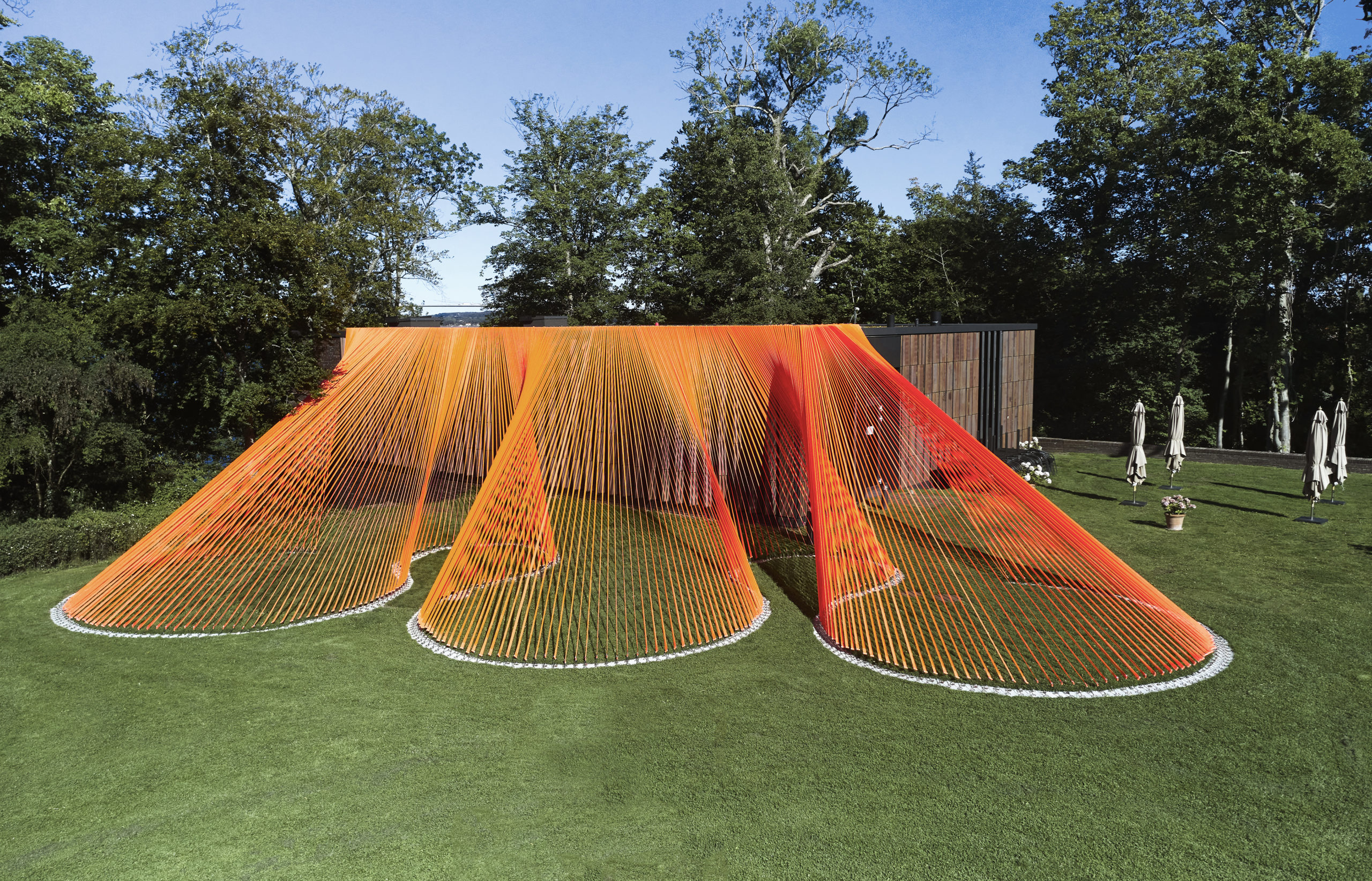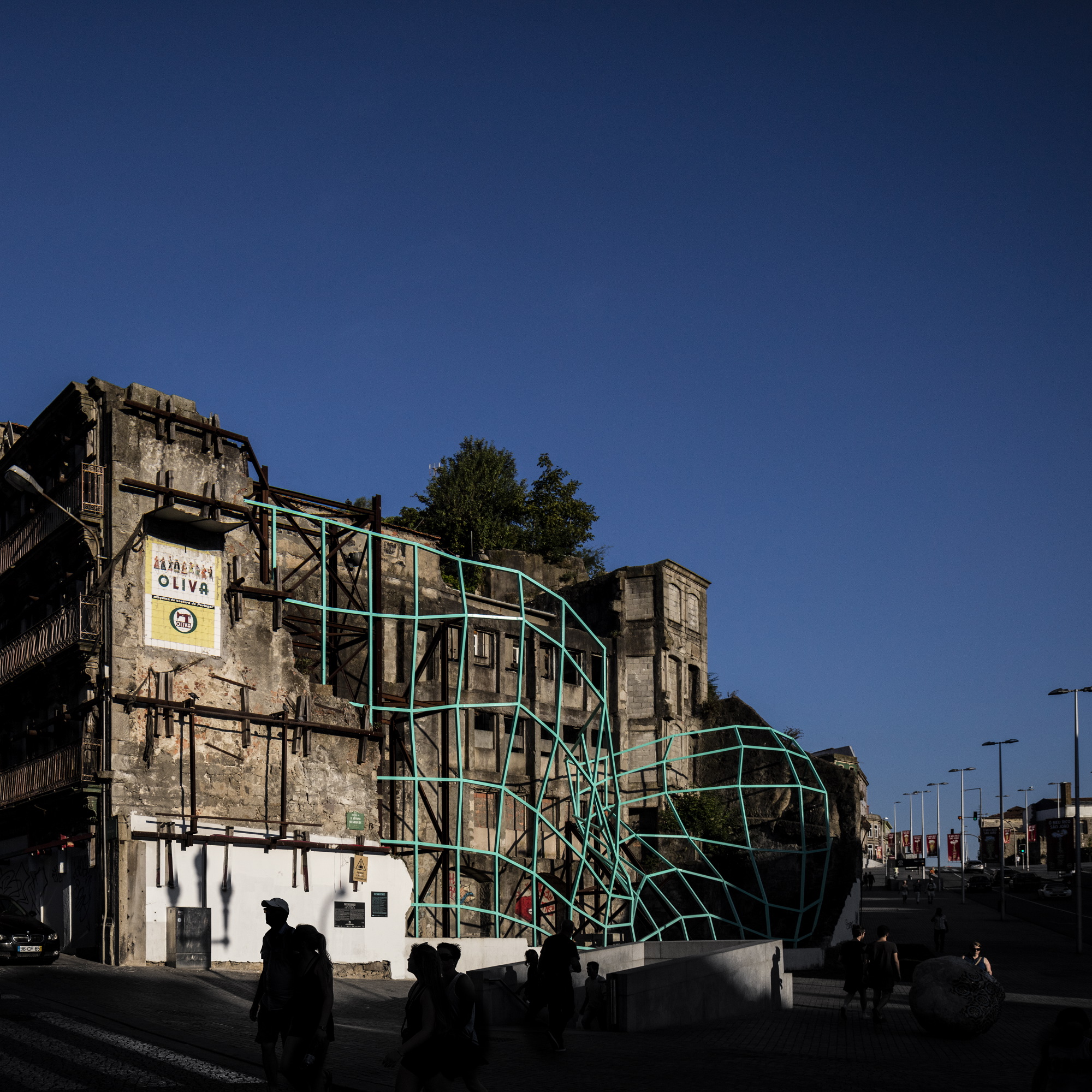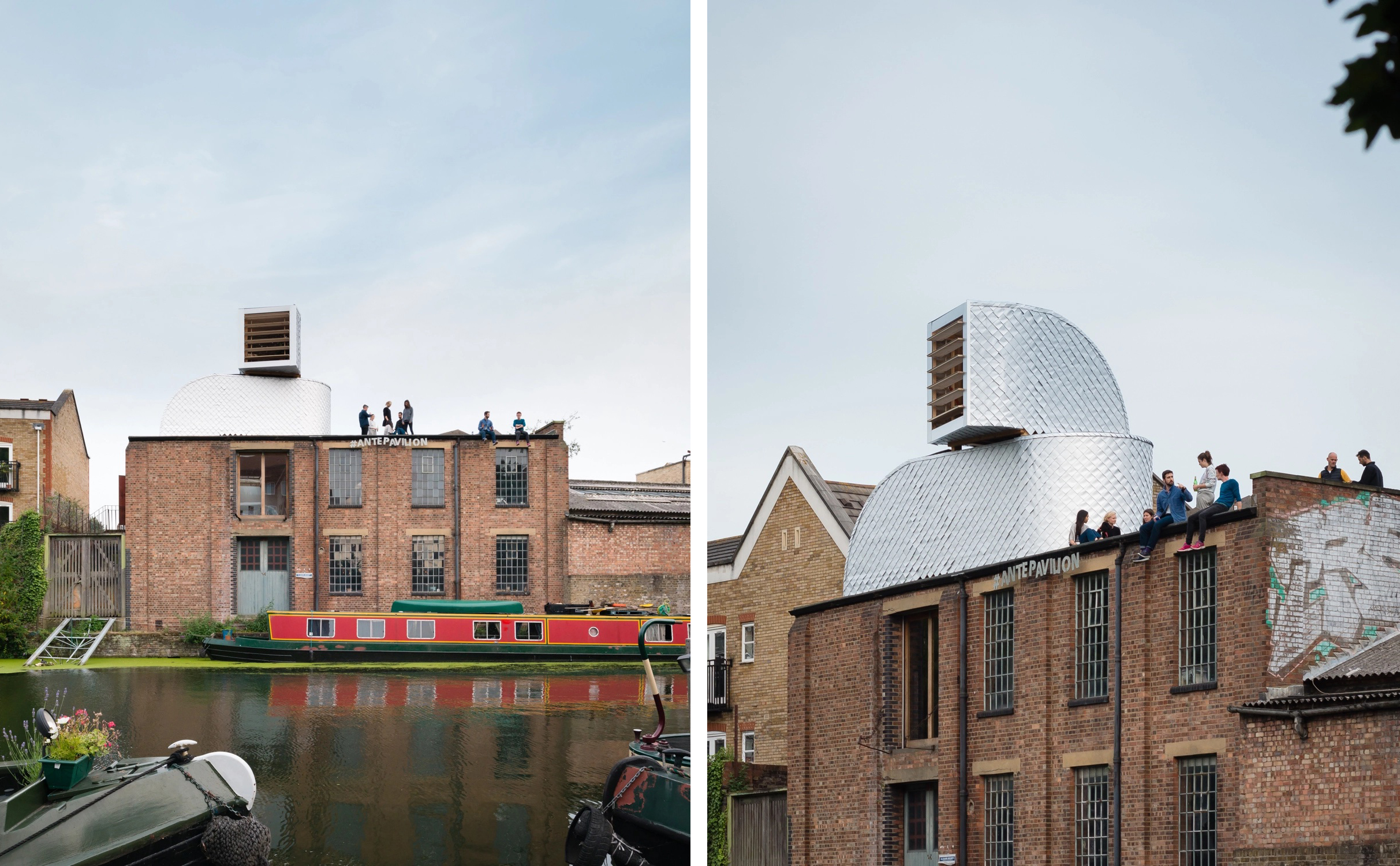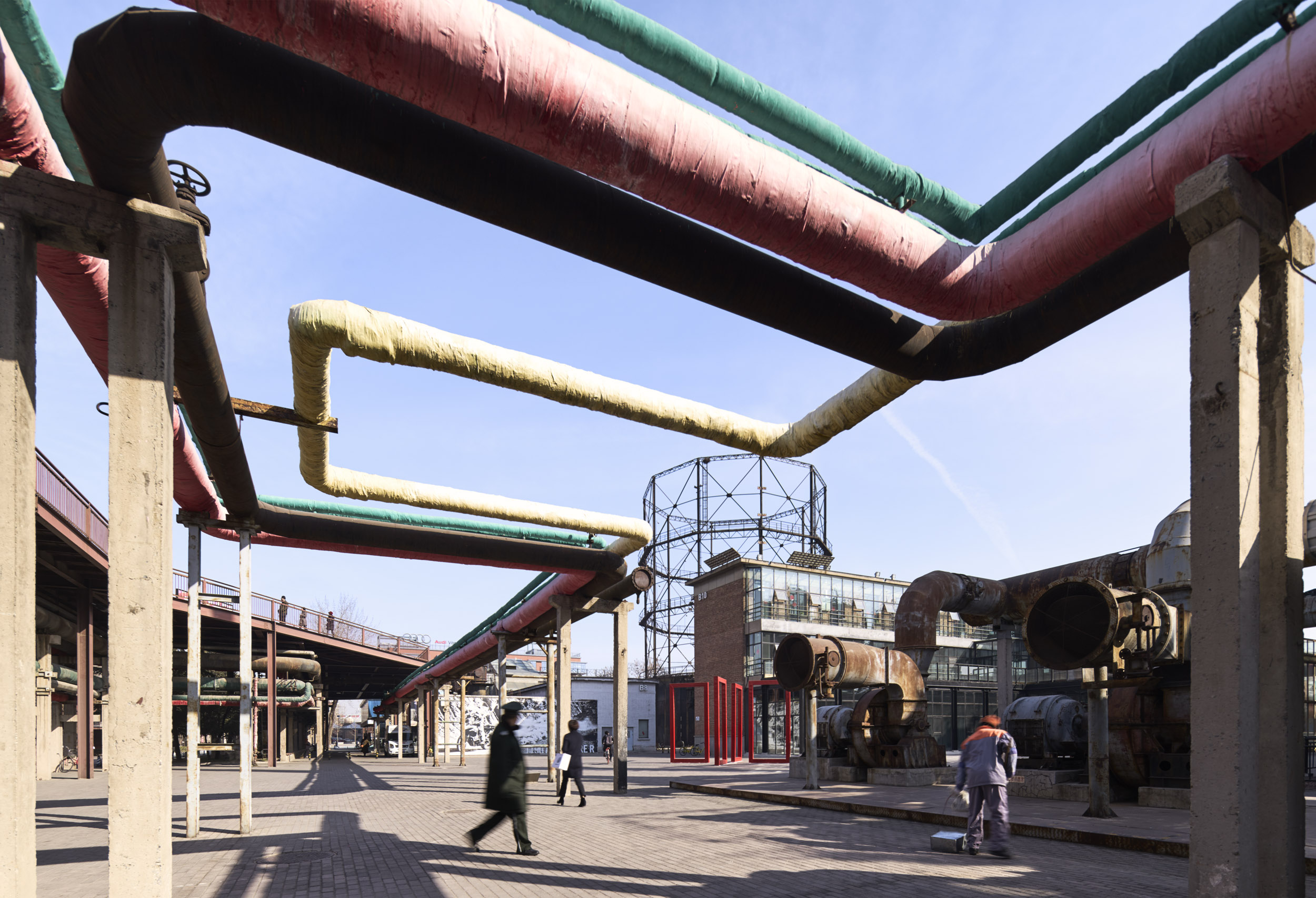Architizer's new image-heavy daily newsletter, The Plug, is easy on the eyes, giving readers a quick jolt of inspiration to supercharge their days. Plug in to the latest design discussions by subscribing.
It’s common practice for large renovation projects of old and ancient buildings to keep any changes to the pre-existing structure as low-key as possible. Usually, when working on a structure with significant historical value, a central aim is to protect and emphasize its historical character. Don’t contemporary additions disrupt that purpose?
The projects below illustrate that this isn’t always the case. In fact, through renovation projects that include large, bright artistic installations, some firms are showing that bold contemporary additions can actually enhance the character of historic structures. These projects demonstrate that when vibrant and playful installations are added to old buildings and ruins, these sites can be redefined as places for artistic contemplation.
Together Apart
By Behin Ha Design Studio, Denmark
Popular Choice Winner, 9th Annual A+Awards, Architecture +Art


Photos by Ard Jongsma and Johnny Madsen
This collection of art installations in Denmark consist in nearly 400 mesh fabric ribbons coated in bright orange which stretch between the roofline of older buildings and the ground. The ribbons follow an undulating pattern which curves on itself along the ground, creating a series of alternating “cellular spaces” that visitors are free enter and interact with. Designed by Behin Ha Design Studio, the artworks revel in the stark visual juxtaposition with the existing buildings whilst physically connecting art and architecture. This tension between togetherness and differences makes the pairing infinitely more interesting.
Garcimuñoz Castle
By Izskun Chinchilla Architects, Castile-La Mancha, Spain


Photos by Miguel de Guzmán and Rocío Romero
The Garcimuñoz Castle in Castile-La Mancha, Spain is over a millennium old, and it serves as a physical record of the region’s rich history, thanks to a combination of Arab, Medieval and Neoclassicist architecture influences that span the 10th to the 18th century. However, recent history has not been as kind to the castle, which has largely transformed into a ruin over the past few centuries.
Fortunately, this changed when Izskun Chinchilla Architects undertook major renovations to bring the castle into the present age. Rather than playing it safe with self-effacing contemporary additions, the firm instead opted for a colorful ensemble of footbridges, platforms, stairs and rails, connecting the different architectural eras of the castle through contrast rather than inconspicuousness. The highlight of the project is a collection of bright, spindly lanterns — which could be taken for wilted tulips — that are nestled in one of the castle’s courtyards.
Metamorfose
By FAHR 021.3, Porto, Portugal


Photos by Fernando Guerra
Long an eyesore in Porto’s cityscape, this decaying ruin offered little more than crumbling, charred façades to an otherwise lively corner of the city. Fortunately, a new artwork FAHR 021.3 has greatly improved the reputation of the ruin, turning the notorious structure into a center of attention that is popular with tourists and locals alike. The artwork’s lime green metal mesh grids, evocative of computer-generated 3D modeling, projects more than a sharp visual contrast; it also recontextualizes the vestiges of a distant past into a mysterious, far flung digital future. The structure itself bends space at will, leaving visitors to fill the metamorphic and metaphoric gaps between ruin and artwork with their imagination.
H-VAC
By PUP architects, Greater London, England, United Kingdom


Photos by Jim Stephenson
Winner of the 2017 Antepavilion International Competition, this art installation by PUP architects cleverly functions as the pre-existing building’s HVAC system, thus allowing the new structure to be built without otherwise necessary planning permits. This playful subversion of building codes extends to the style of the structure itself: two bending, overlapping tubes clad in silver shingles made from recycled carton. It’s a bold addition to the rooftop of the centuries-old commercial brick building, but not necessarily a jarring one.
Beijing 798 Arts District Vision Plan
By Edward Caruso Photography, Beijing, China


 This new art museum in Beijing repurposes the gritty, industrial landscape of an old factory into a cultural space evoking a somewhat cyberpunk aesthetic. In many places, the renovations are kept minimal: the repurposing keeps front-and-center the decaying state of the site’s smokestacks while leaving untouched the rusting steel structures overhanging throughout. But that still leaves space for artistic flourishes, including a collection of suspended pipelines that are covered in colorful fabric and which snake around the site in playful fashion. Rather than imposing a new aesthetic on the factory, the repurposing provides a new framework from which to contemplate the site — a lens that lets visitors see the rugged beauty of the industrial.
This new art museum in Beijing repurposes the gritty, industrial landscape of an old factory into a cultural space evoking a somewhat cyberpunk aesthetic. In many places, the renovations are kept minimal: the repurposing keeps front-and-center the decaying state of the site’s smokestacks while leaving untouched the rusting steel structures overhanging throughout. But that still leaves space for artistic flourishes, including a collection of suspended pipelines that are covered in colorful fabric and which snake around the site in playful fashion. Rather than imposing a new aesthetic on the factory, the repurposing provides a new framework from which to contemplate the site — a lens that lets visitors see the rugged beauty of the industrial.
Architizer's new image-heavy daily newsletter, The Plug, is easy on the eyes, giving readers a quick jolt of inspiration to supercharge their days. Plug in to the latest design discussions by subscribing.





 Beijing 798 Arts District Vision Plan
Beijing 798 Arts District Vision Plan  Garcimuñoz Castle
Garcimuñoz Castle  H-VAC
H-VAC  Metamorfose
Metamorfose  Together Apart
Together Apart 


